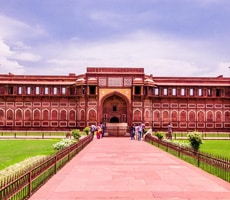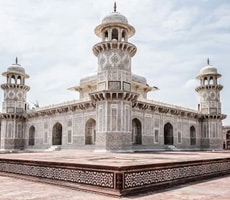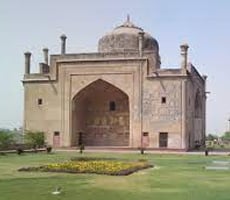The Taj Mahal is an ivory-white marble tomb on the south bank of the Yamuna stream in the Indian city of Agra. It was appointed in 1632 by the Mughal ruler, Shah Jahan (ruled from 1628 to 1658), to house the burial chamber of his number one spouse, Mumtaz Mahal. The burial chamber is the focal point of a 17-hectare (42-acre)complex, which incorporates a mosque and a visitor house, and is set in conventional nurseries limited on three sides by a crenelated divider.
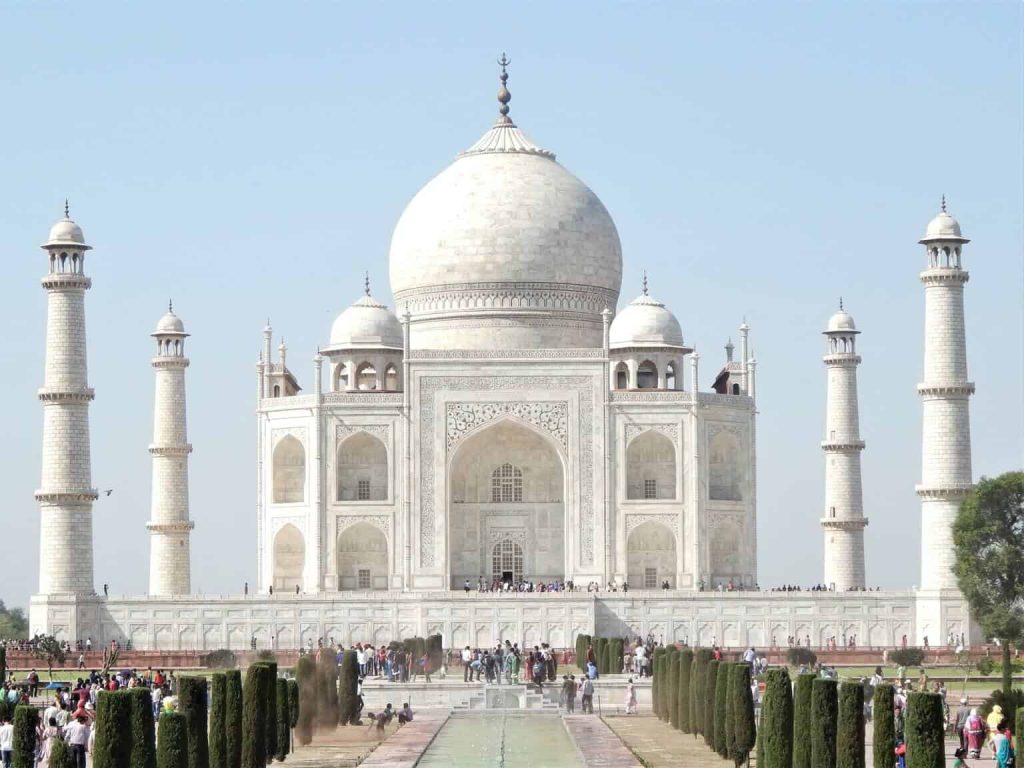
Development of the tomb was basically finished in 1643 yet work progressed forward different periods of the venture for an additional 10 years. The Taj Mahal complex is accepted to have been finished completely in 1653 at an expense assessed at an opportunity to be around 32 million rupees, which in 2015 would be roughly 52.8 billion rupees (U.S. $827 million). The development project utilized about 20,000 craftsmans under the direction of a leading group of modelers drove by the court engineer to the ruler, Ustad Ahmad Lahauri.
The Taj Mahal was assigned as an UNESCO World Heritage Site in 1983 for being “the gem of Muslim craftsmanship in India and one of the all around respected magnum opuses of the world’s legacy”. It is viewed by numerous individuals as the best illustration of Mughal design and an image of India’s rich history. The Taj Mahal pulls in 7–8 million guests every year. In 2007, it was proclaimed a victor of the New 7 Wonders of the World (2000–2007) drive.

How to Reach
By Air
It takes 12 minutes to travel from Taj Mahal to Kheria Airport. There is a distance of 10 km between the Taj Mahal and the Kheria Airport
By Train
There is a good network of trains connecting Agra with the rest of the country. Apart from the main railway station of Agra Cantonment, there are other two stations also, that of Raja-ki-Mandi and Agra Fort. The main trains connecting Agra with Delhi are Palace on Wheels, Shatabdi, Rajdhani, and Taj Express.
By Road
There are regular bus services from Agra to a number of important cities. The main bus stands of Idgah and ISBT has a number of buses running for Delhi, Jaipur, Mathura, Fatehpur-Sikri, etc. if you are coming from Delhi to Agra. you can hire Delhi to Agra Taxi on specail discounts.
Timings and Ticket Prices
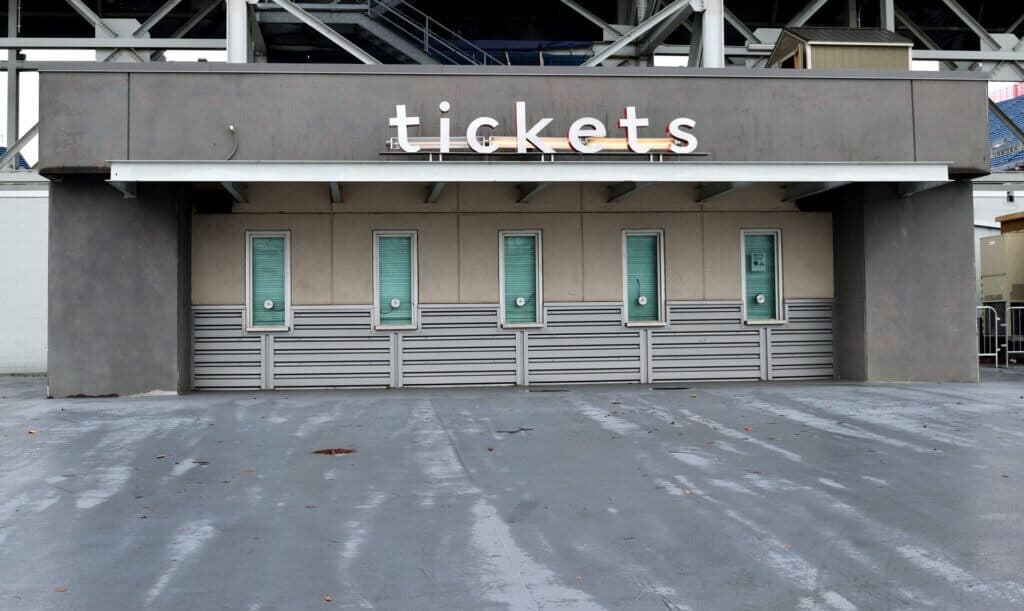
(Taj Mahal opens 30 Minutes before sunrise and closes 30 Minutes before sunset during normal operating days)
Taj Mahal is closed on Fridays for general viewing. Other days it is always open.
Ticket Outlets
(Buying Taj Mahal Ticket from Entry Gate Ticket Counter)
Taj Mahal Western Gate :Tickets are available on Western Gate near Saheli Burj. (Timing-One Hour before Sunrise upto 45 Minutes before Sunset).
Taj Mahal Eastern Gate :Tickets are available at Eastern Gate of Taj Mahal. (Timing-One Hour before Sunrise upto 45 Minutes before Sunset).
Taj Mahal Southern Gate :No Entry from this gate at Present only Exit is allowed.
There are separate queues for Foreign tourists and Domestic tourists to enter to Taj and signs will direct you accordingly.
| Entry Fee | |
| Tourist Type | Amount (Rs.) (Inclusive of ASI & ADA fees) |
| Foreign tourist | 1100/- + 200/- Additional for visiting main mausoleum (Optional) |
| Citizens of SAARC and BIMSTEC Countries | 540/- + 200/- Additional for visiting main mausoleum (Optional) |
| Domestic/Indian/OCI Cardholder | 50/- + 200/- Additional for visiting main mausoleum (Optional) |
Note-
1) Tourists buying tickets online will get discount of Rs.5/- for per Indian ticket & Rs. 50/- for per Foreigner ticket.
2) No Entry fee for children below the age of 15 years. (both Domestic and Foreigner).
3) Additional Rs.200/- will be charged if one wants to visit main mausoleum
Information for Tourists Visiting Taj Mahal
Water bottle is allowed inside the monument. Shoe covers, half Litre water bottle and Tourist Guide Map of Agra, Battery Bus & Golf Cart Service are provided free of cost with the SAARC, BIMSTEC & foreigner’s entry ticket for the Taj. Wheel Chair for Differently abled People & First Aid Box are available at ASI Office.
Do’s
 Tourists must co-operate in keeping the monument neat & clean by using dustbins.
Tourists must co-operate in keeping the monument neat & clean by using dustbins. Tourists are advised to hire approved guides & photographers who exhibit their identity cards.
Tourists are advised to hire approved guides & photographers who exhibit their identity cards. Taj Museum inside Taj Mahal Complex opens from 10.00 AM to 5.00 PM, entry free.
Taj Museum inside Taj Mahal Complex opens from 10.00 AM to 5.00 PM, entry free. No Polluting vehicles are allowed within 500 mts. radius of Taj Mahal. Parking Facility is available at Shilpgram for east gate entry & at Amrood ka Teela for west gate entry.
No Polluting vehicles are allowed within 500 mts. radius of Taj Mahal. Parking Facility is available at Shilpgram for east gate entry & at Amrood ka Teela for west gate entry. From parking to Taj Mahal gate battery buses & golf carts are available.
From parking to Taj Mahal gate battery buses & golf carts are available.
Don’ts
 Drone camera is strictly prohibited inside and around the Taj Mahal.
Drone camera is strictly prohibited inside and around the Taj Mahal. Eating and smoking is strictly prohibited inside Taj Mahal. Arms, ammunitions, fire, smoking items, tobacco products, liquor, eatables (Toffees), head phones, knives, wire, mobile charger, electric goods (except camera), Tripods are also prohibited.
Eating and smoking is strictly prohibited inside Taj Mahal. Arms, ammunitions, fire, smoking items, tobacco products, liquor, eatables (Toffees), head phones, knives, wire, mobile charger, electric goods (except camera), Tripods are also prohibited. Mobile phones are to be kept switched off or on silent mode.
Mobile phones are to be kept switched off or on silent mode. Please avoid carrying big bags and books inside the monument, this may increase your security check time.
Please avoid carrying big bags and books inside the monument, this may increase your security check time. Photography is prohibited inside the main mausoleum.
Photography is prohibited inside the main mausoleum. Avoid touching & scratching the walls & surfaces of the monument as these are heritage sites and need special care.
Avoid touching & scratching the walls & surfaces of the monument as these are heritage sites and need special care. Visitors are requested not to make noise inside the mausoleum.
Visitors are requested not to make noise inside the mausoleum. Above mentioned list of prohibited items along with mobile phones are banned for night viewing of the Taj Mahal. Video camera, extra batteries are prohibited though still camera is permitted after the security check for night viewing of Taj Mahal.
Above mentioned list of prohibited items along with mobile phones are banned for night viewing of the Taj Mahal. Video camera, extra batteries are prohibited though still camera is permitted after the security check for night viewing of Taj Mahal.
Other Attractions of AGRA
Agra Fort
A massive red-sandstone fort located on the banks of River Yamuna was built under the commission of Emperor Akbar in 1565 and was further built by his grandson Shah Jahan. The fort, semi-circular on plan, is surrounded by a 21.4 m high fortification wall. The fort was built primarily as a military structure; parts of it are still reserved under Indian Army. Shah Jahan transformed it into a palace, later it became his gilded prison for eight years after his son Aurangzeb seized power in 1658. The fort houses a maze of buildings, including vast underground sections. The Amar Singh Gate to the south is the sole entry point. A path leads straight from here up to the large Moti Masjid. Just before this is the open Diwan-e-Aam, where Shah Jahan listened to people’s petitions or issues. A small staircase just to the left of Diwan-e-Aam throne leads up to a large courtyard. To the left is a beautiful white marble Nagina Masjid. Other places to see within the Fort are: Diwan-e-Khas – which once housed Shah Jahan’s legendary Peacock throne and the diamond Koh-I-Noor, Shish Mahal- a palace with walls inlaid with tiny mirrors, and Khas Mahal – the white octagonal tower and palace. In the South of the fort, there is a huge red-sandstone Jahangir’s Palace, built by Akbar probably for his son Jahangir.
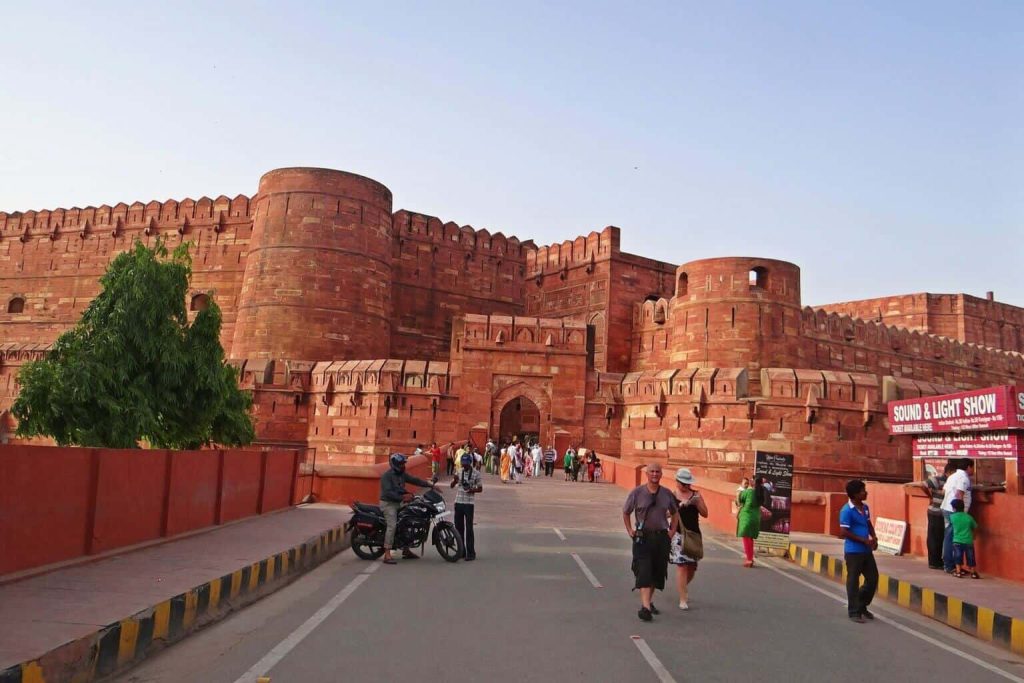
Sikandra/Akbar’s Tomb
Located in the western periphery of the city, the red-sandstone and marble tomb was built by Emperor Akbar, which was later completed by his son Jahangir. Its interior is covered with exquisite calligraphy that reflects the tenets of Din-e-Ilahi, a religious movement started by Emperor Akbar based on the fusion of primarily Hinduism and Islam including other religions as well. Sikandra is the resting place of the Mughal emperor Akbar and his grave lies here in a dark chamber. The outlying garden which is laid out in the Char Bagh style is yet another attraction of the place.
Itmad-Ud-Daula
A masterpiece of design and construction, this tomb was built under the commission of Empress Noor Jahan in memory of her father Mirza Ghias Beg in 1623-28 A.D. This ornate tomb is considered a precursor of Taj Mahal. It is built completely in white marble and reflects a dazzling charm to the visitors.
Chini Ka Rauza
This place is a mausoleum of Shah Jahan’s Prime Minister and Persian poet Afzal Khan Mullah. It is situated just one km away from Itmad-ud-Daula Tomb. The monument is set amid well-tendered gardens, known for its blue glazed tile. The glazed tiles used in the monument are made from porcelain which is also known as “Chini Mitti” or “Chinese Clay” which is said to be brought from China. The tiles used in the monument can still be seen on a small part of the exterior while most of the interior is painted in Floral Designs. This place is a curtain raiser to an exotic Persian art style, which finds itself a home in Agra. You can visit the place from sunrise to sunset any day.
Mariam’s Tomb
This unique tomb in red sandstone was built in the memory of Emperor Akbar’s wife Mariam Zamani. The tomb is just a km away from the tomb of Akbar. It is situated on the Delhi-Agra National Highway, near Fatehpur Sikri. Born a Rajput Princess, Heer Kunwari was married to Akbar in 1562, and rechristened as Mariam-uz-Zamani. She bore Akbar a son, the future king, Jahangir. After her death in 1623, Jahangir built a tomb for her close to Sikandra. The tomb has exceptional carvings and the ground floor consists of some forty chambers built by Sikandar Lodi, which bear faint traces of paintings on plastered walls. The centre of the ground floor houses the cenotaph of Mariam. The facades of the baradari had been covered with red sandstone, which is cut into numerous panels and adorned with geometrical patterns carved in bas-relief. Each quoin of the structure is added with an ornamental octagonal tower. The tower is crowned by a pavilion supported by slender pillars. The upper storey contains the marble cenotaph, which is open to sky.
Ram Bagh
Ram Bagh is one of the earliest Mughal gardens, believed to be laid out by Mughal Emperor Babur, the founder of Mughal Dynasty. The Garden is located just 3 KMs away from the Tomb of Itmad-Ud_Daula and 500 meters away from the Chini ka Rauza. It is Agra’s oldest garden which was established in 1528, and is an oasis in the thick of a bustling market. It is said that Babur was temporarily buried here before being taken to Kabul in Afghanistan. It was established by Babur and was later renovated by Noor Jahan, wife of Jahangir.
Nagina Masjid
Nagina Masjid is a beautiful mosque located in Agra Fort. It is located near Moti Masjid. This mosque is constructed with pure white marble and hasabeautifully designed prayer chamber. The Mosque built in the north-western corner of the Machchi Bhawan was meant for the personal use of the Emperor. It has a marble paved court enclosed by walls to the north, south and east and the prayer chamber on the west. The prayer chamber is also made up of marble and has three domes on its top. The mosque has a three-arched façade with the cusps and supported on slender piers as its entrance. The arch in the middle is larger and has nine cusps and ones on the either sides have seven cusps only.
Mehtab Bagh
Mehtab Bagh is located on the left Bank of River Yamuna opposite to the Taj Mahal. This park is originally built by Emperor Babur as the last series of the 11 parks on the Yamuna’s bank.The garden complex, square in shape, measures about 300 by 300 metres (980 ft × 980 ft) and is perfectly aligned with the Taj Mahal on the opposite bank.The excavation has revealed a huge octagonal tank at center and a gateway at the northern wall.This is now one of the best places to view the great mausoleum.
Jama Masjid
The Jama Masjid is one of the Largest Mosque built by the Mughals in India. This Masjid houses a rectangular open forecourt constructed in 1648 A.D by Shah Jahan’s daughter, Jahanara Begum. The architecture of this monument is done beautifully while imbibing the Iranian architecture and is built using red sandstone and white marble .The construction of Jama Masjid required some 5,000 workers and was completed in a time period of 6 years.
Guru Ka Taal
Guru Ka Taal is a very famous Gurudwara in Agra. The construction of this place was started in the 1970’s and it is said that the four out of the 10 Sikh gurus are said to have paid it visit. This Gurudwara has both historical and religious importance, and attracts large number of devotees and tourists. Every year thousands of devotees gather here to pay homage to the great Sikh guru. This beautiful structure is reckoned among the magnificent architectural wonders of India. Boasting elaborate stone carvings this Gurudwara beckons travellers from far and away to bask in its glory.
Book Agra Tour with Us
 We make your dreams of an exotic vacation come true
We make your dreams of an exotic vacation come true We give you the freedom to customize your trip
We give you the freedom to customize your trip We share the itinerary days before so that you can modify it according to your choice
We share the itinerary days before so that you can modify it according to your choice We give you a chance to sit back and enjoy a hassle-free vacation
We give you a chance to sit back and enjoy a hassle-free vacation We don’t believe in hidden costs
We don’t believe in hidden costs We do the planning and budgeting for you and save your precious efforts and money
We do the planning and budgeting for you and save your precious efforts and money We provide you constant support and guide you
We provide you constant support and guide you



